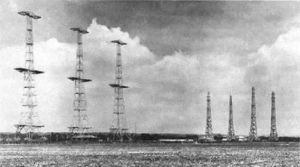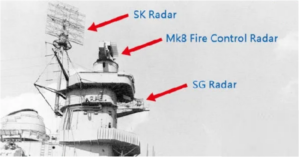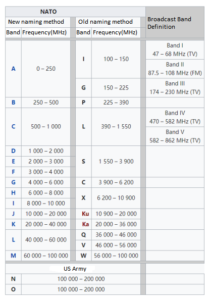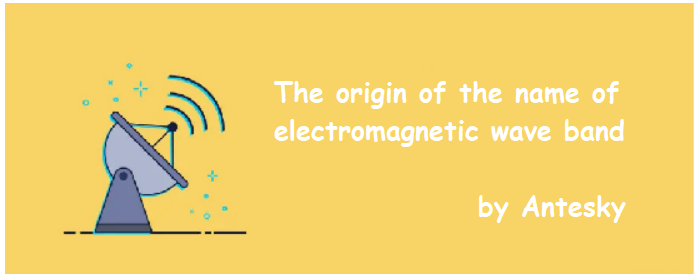
For those of us who are engaged in satellite antenna communication industry, we deal with electromagnetic waves every day, and we often see satellite antenna named in C-band, L-band, Ku-band, and Ka-band antenna. Have you ever wondered how these band names come from?
Satellite Antenna in C band, ku band, ka band or S/X, C/L or other customized dual band antenna are available in Antesky. Firstly, there are various projects we had ever done around the world about earth station ground station antenna and portable flyaway antenna for detailed reference. Also, you can view our satellite antenna installation video for knowing our antenna structure.
In other words, C-band, L-band, Ku-band, Ka-band, etc., all belong to the microwave band we often say. Microwaves are part of the entire electromagnetic wave.
The earliest record of naming the microwave band can be traced back to World War II.
Everyone knows that after the Germans occupied the European continent, they wanted to bring Britain to its knees through air blitz. In order to counter the German air raids, the United Kingdom established a large number of radar stations.
British radar during World War II
Radar is the transliteration of English Radar, derived from the abbreviation of radio detection and ranging, which means “radio detection and ranging”.
The earliest radar used for search purposes had an electromagnetic wavelength of 23cm (later changed to 22cm), which the British defined as the L-band. L is the initial letter of the English “Long”. L-band, which is the long-wave band.
Later, the engineers came up with a radar with a wavelength of 10cm, which was defined as the S-band. S, is the initial letter of “short”. That’s right, the S-band is a short wave, a wave that is “shorter” than a long wave. Now we Antesky has the satellite antenna as L-band of Rx-1.4-1.7GHz.
Later, radar with a wavelength of 3cm appeared. This radar is specifically used for fire control targeting, so it is called X-band. X is the “crosshair” from the scope, and it also represents a certain point on the coordinates.
The radar system on the US Iowa-class warship during World War II
SG Radar, it works in S-band
S-band and X-band radars are widely used on warships. S-band radar is generally used as a medium-range warning radar and tracking radar. X-band radar is generally used as a short-range fire control radar.
In order to combine the characteristics of X-band and S-band radars, researchers have developed a radar with a wavelength of 5cm, which is called C-band. C is the initial letter of the word Compromise, which means “combination”. And now we Antesky has the satellite antenna as C-band of Rx-3.625-4.2GHz/Tx-5.85-6.425GHz.
Seeing that the British radar is so powerful, the Germans also began to independently develop their own radar.
They chose 1.5cm as the center wavelength of their radar. Electromagnetic waves of this wavelength are called the K-band (K = Kurtz, meaning “short” in German).
Unfortunately, the Germans found that the electromagnetic waves in the K-band are easily absorbed by water vapor, so they cannot be used in rainy and foggy weather.
In order to avoid this problem, the Germans began to use electromagnetic waves longer or shorter than the K-band as radar working waves.
The wavelength slightly longer than the K-band is called the Ku-band (Ku, the abbreviation of English K-under, meaning below the K-band). The wavelength slightly shorter than the K-band is called the Ka-band (Ka, the abbreviation of English K-above, meaning above the K-band). So now like we Antesky has the satellite antenna as Ku and Ka-band, and the frequency band of these satellite antennas as Tx-13.75-14.5GHz/Rx-10.95-12.75GHz and Tx-27.5-31GHz/Rx-17.7-21.2GHz
I almost forgot that the earliest radar also used meter waves extensively, which is called P-band (P comes from Previous, which is the initial letter of “Previous”).
Later, these band names derived from radar were further extended to communication fields such as satellites, microwaves, and radio and television, and became common names in the industry.
Based on the names of these bands, IEEE (Institute of Electrical and Electronics Engineers) has unified the specifications, as follows table 1:
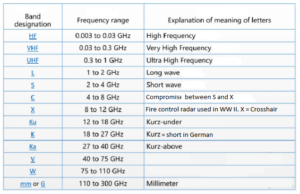 Table 1 Unified the specifications of IEEE (Institute of Electrical and Electronics Engineers)
Table 1 Unified the specifications of IEEE (Institute of Electrical and Electronics Engineers)
A more complete version of the microwave band specification as below Table 2: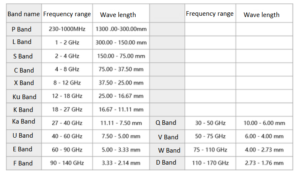
Table 2 Complete version of the microwave band specification
Because this name mixes multiple systems, it is very cumbersome and easy to get confused. Therefore, European and American countries represented by NATO have redesigned a new naming system to replace it in alphabetical order.
The corresponding relationship between the new system and the old system is as follows Table 3:
Table 3 Corresponding relationship between the new system and the old system
Nowadays, according to different countries and regions, people still have customary differences in calling bands, some people like to use the old-fashioned name, and some people like the new-style name. Moreover, there are also differences regarding the definition of specific numerical ranges.
However, I believe that these names and definitions will gradually become unified as time goes by.
Well, the above is the origin of the naming of electromagnetic wave bands, do you understand it?
If you are interested in learning further about Antesky satellite antenna, please feel free to let us know. Or you can contact with us via sales@antesky.com.

